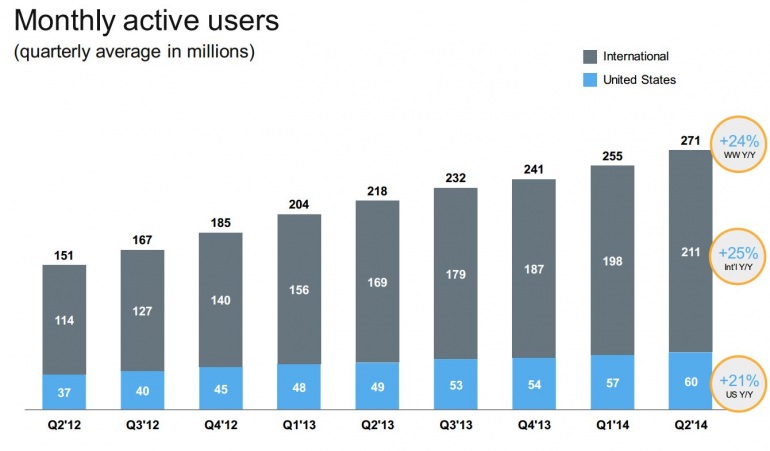We still don't know exactly how many Australians are on Twitter
Since launching a local office last year, social media platform Twitter hasn’t been shy in saturating the market with fun and fascinating factoids about its platform.
For instance, did you know that around 95 per cent of public conversation about television is on Twitter? Or that 40 per cent of users on Twitter don’t actively tweet, but rather use the service as a way to follow their interests?
Yet for all the information that Twitter provides, it’s been coy on revealing the metrics that count, like the total number of active users in Australia or the amount of time an average Australian user spends on Twitter.
Now that the social network is embedded in Australia, this practice is starting to do it damage. Guesstimates from analysts, researchers and bloggers that were once acceptable are inadvertently holding the platform back and are possibly costing it ad revenue.
"It would be great for us to have some solid numbers and some real figures from the horse's mouth," says Queensland University of Technology social media researcher Axel Bruns.
Bruns' comments come after the release of new research into the Twittersphere, which calculates that there are 2.8 million active Twitter accounts in Australia. It’s the most empirical analysis to date, but even Bruns admits that it may not be completely accurate.
He says that only Twitter would have the means to filter out the false positives and variables that would allow for an accurate count. He’s talking about accounts that claim to be in Australia but are posting from elsewhere, or accounts that don’t offer a location.
Calculating the total number of Australian users on Twitter is really just a means to an end for Bruns and QUT. It’s the base of a deeper study into how the social network has woven itself into Australian society and our political sphere. His work could have serious implications for how Twitter is perceived in Australia and, consequentially, how it is used by senior political figures and major companies. Despite this, Bruns says that Twitter Australia has done little to assist his research.
Twitter has a history of not divulging its data. Twitter’s Australian arm was unable to return requests for comment before the publication of this article, but it typically refers reporters seeking user metrics to its quarterly reports. It says that outside of the US, it doesn’t measure its users on a country-by-country basis. As part of its results, it breaks down its user data into three key metrics: US users, international users (everyone outside of the US) and worldwide users.

Source: Twitter
This reporting structure may please US investors, who recently sent its share price to new heights on the NASDAQ on the back of its Q2 results. But they do little for marketing agencies attempting to sell Twitter as a viable advertising platform in Australia.
Mandi Bateson, head of social for the global marketing agency Mindshare, appreciates that Twitter “isn’t trying to mislead” by flooding the market with questionable user metrics. But she says that these numbers are required to help woo anxious Australian marketers who are used to spending on more mainstream channels like TV ads.
She inevitably contrasts Twitter to its rival Facebook, saying that it’s an easier sell to those new to social media marketing, given that it’s able to offer up to 150 separate data points on its Australian user base.
Unlike Twitter, Facebook is upfront in revealing that it has around 13 million active users in Australia. The company is currently advertising for a head of insights for Instagram in Australia, a move which Bateson thinks will push Facebook’s data advantage into its photo-sharing service.
Bateson credits Twitter’s lack of data as a “chicken and egg scenario”. She believes the Australian advertising market hasn’t warmed enough to Twitter to warrant the time needed to generate and sustain the data. As revealed in its results presentation (PDF) last week, in Q2 2014 only 22 per cent of its active users were in US, but 77 per cent of its revenue is generated by US-focused advertising and data licensing.
As for the egg part of the equation, Bateson argues that advertisers would warm to Twitter if marketing agencies had more data to help sell the platform to advertisers.
Others believe that inevitable comparisons to Facebook are the reason why Twitter hasn’t been more forthright with its data. After all, most estimates pit Twitter’s total user pool between the two to three million mark.
“If it does release its numbers, then the first thing people will say is, 'Yes, it doesn't have as many users as Facebook',” says QUT’s Bruns.
“If it stops at that, then it actually has a negative effect.”
“What Twitter really needs to do -- what I would really like it to do -- is to articulate much more clearly that, we're not Facebook, we're not trying to be Facebook, and we’re our own thing.”
Got a question? Let us know in the comments below or contact the reporter @HarrisonPolites on Twitter.
















